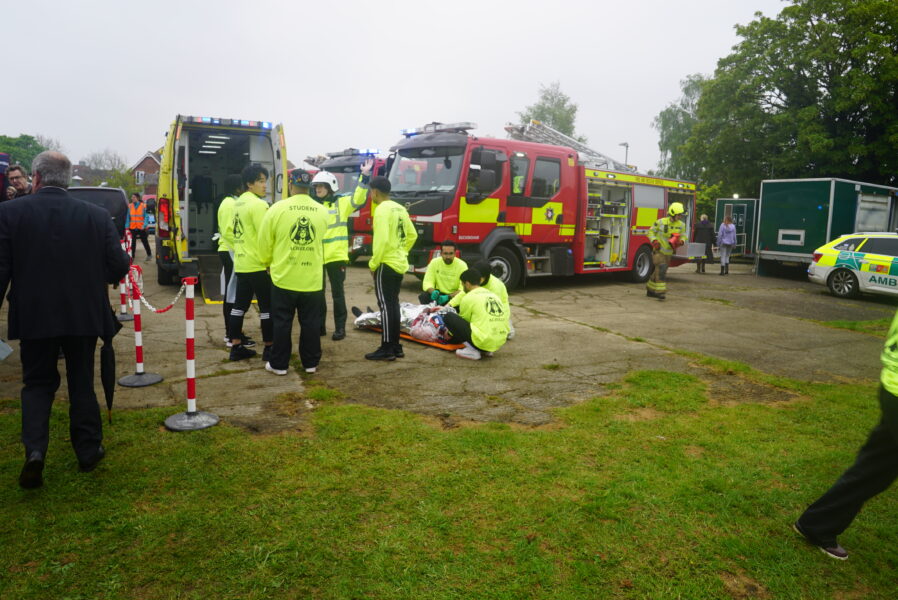A rail accident and a road crash involving a car and a minibus on the same day in the same place, would be catastrophe for emergency services in any small market town
Fortunately, neither of them were real, only simulations devised as a training exercise for medical students.
It meant that 147 of them from the University of Buckingham could develop the skills they’ve been learning the classroom and to build in aspects of complexity and uncertainty, which is a key training requirement of the General medical Council.
There were roughly 50 volunteer patients, briefed to act as realistically as they could to give the students feeling of the sort of chaos they could expect in real life. The idea was to create a heightened reality.

Prof Joanne Selway, the event’s director said: “It’s an opportunity for these students to test their skills. It’s important because students need to act with precision and speed and test the skills that they’ve learned in the classroom, and they need to be tested.”
Prof Joanne Harris, Dean of the Faculty of Medicine and Health Science said: “We are unique amongst medical schools in holding an event of this scale and it’s such a good learning experience for the students. We are being asked to show how we teach complexity and uncertainty among students and it’s very hard to do in a classroom.
“Before these events, students are a bit nervous, and they don’t know what to expect but afterwards they say they’ve learned so much and they understand how they will react, and they can learn so much about themselves.”

Not only did this event involve students, but the emergency services also took part. Buckingham Fire and Rescue and Buckinghamshire New University’s paramedics were on the scene throughout the day.
Fire and Rescue spokesman Graham Kemp said four engines and three officers were there make it as realistic as possible, sdding: “We are trying to maximise the students’ exposure to as real an incident as we can”.

Actor Alex Thraxton, who played one of the victims admitted some of the scenarios were “scary” for the students, something he felt was deliberate but necessary.
“Some of the students panicked because we put on a very stressful show for them,” he said. “I died, unfortunately, because they didn’t get me to the ambulance in time. It’s useful because it makes them think, ‘Oh, my patient died, if that was real life, he would have actually died.
“If they don’t go through this, the first time they experience it they just freeze so doing this is really important for them to become good doctors, nurses, paramedics.”

Event Manager, Emily Brown said the event had been has been a success. “It’s been good to see the students treat all these patients and react in real time to how the patients have been feeling.
“Our actors have been exceptional in facilitating the chaos. It’s been amazing for our students to see what it might look like if they come across an accident like this. Bucks Fire and Rescue say it’s been really worthwhile for their crews, to practice their procedures and ten-second triages, so, overall, a big success.”




